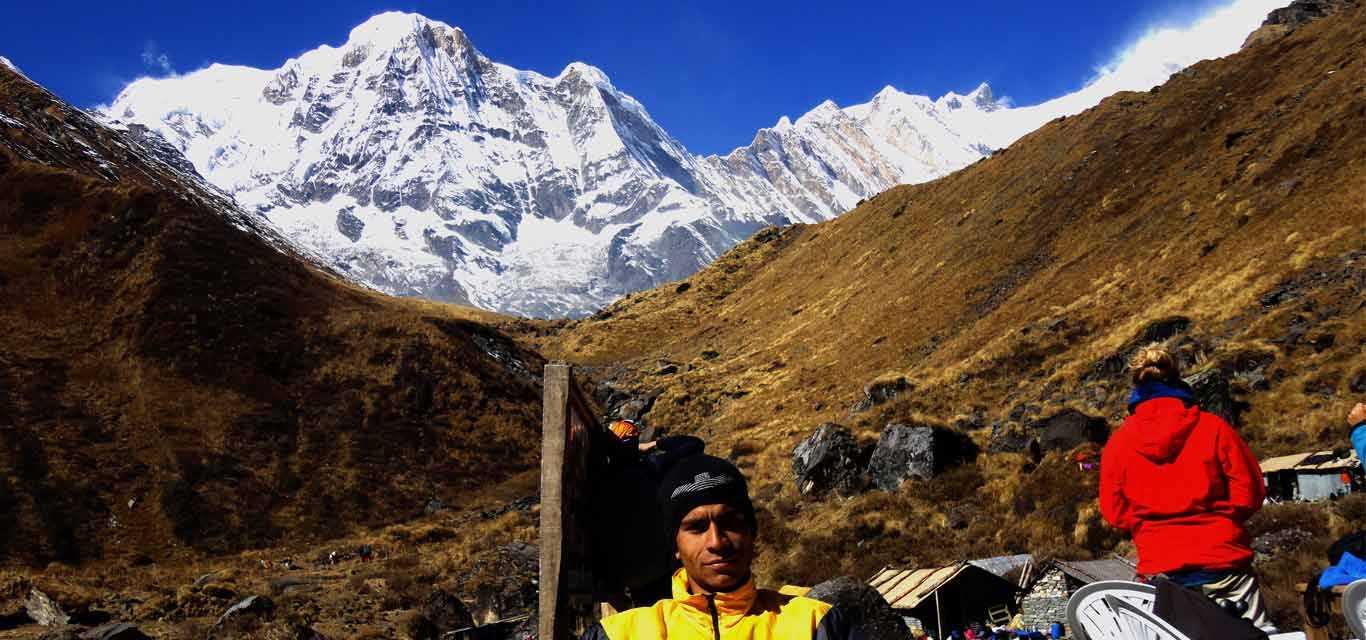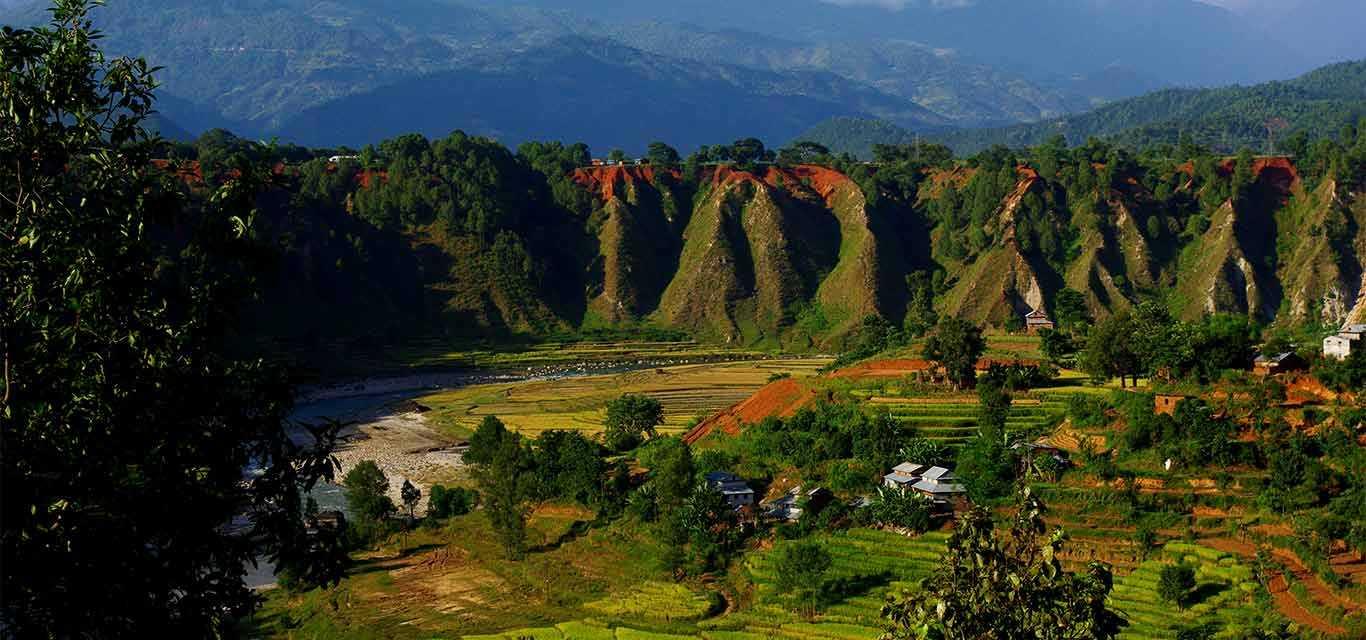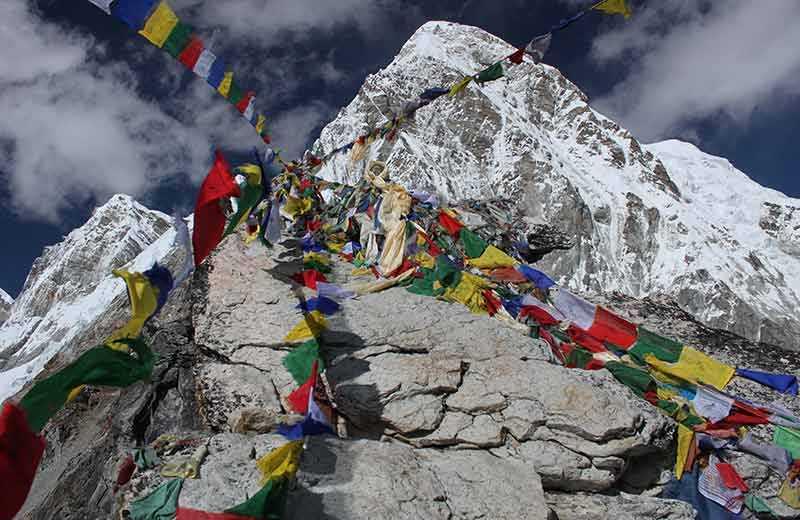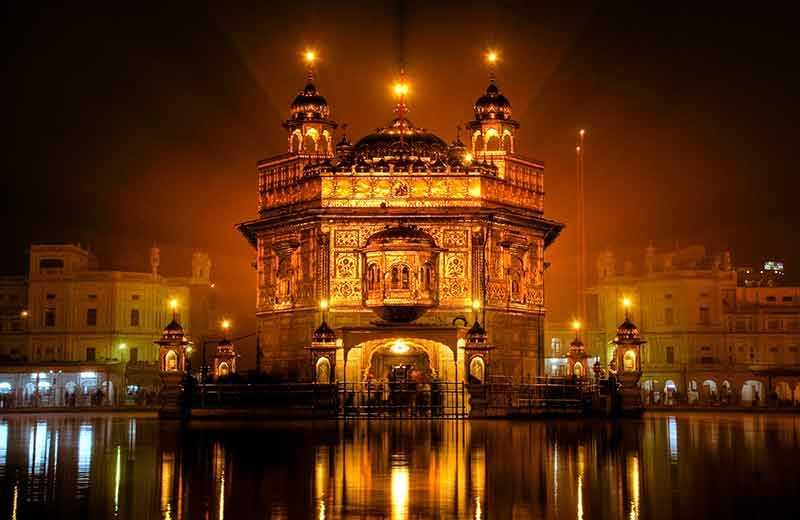Kumari - The Living Goddess of Nepal

The Legend of Living Goddess: Kumari
As there are many wonders in Nepal, one of the most significant cultural traditions is the only living goddess, Kumari, also believed to be an embodiment of Goddess Taleju, a manifestation of Goddess Durga.
Worshipping Kumari as a goddess is a centuries-old tradition followed by both Hinduism and Buddhism. The word “Kumari” literally translates to virgin in Nepali. Hence, the goddess is a prepubescent girl.
There are 12 Kumaris in Kathmandu Valley, but almost all the Newari communities have their own Kumari. The main Kumari is of Kathmandu Durbar Square, and she is given the title of the Royal Kumari. This living idol possesses divine spiritual energy. She is who protects the valley from demons and negative energy.
Worshipping the Goddess in Nepal
There are numerous sects in Hinduism, and among the Shakta sect is one that worships the Goddess as its main deity. Shakta sects were believed to have started in the Paleolithic age, as evidence of goddess worship in this age was discovered by historians from fossils.

At the Paleolithic age in Europe, the statue of Goddess Venus was found, which dates back to 12-14 thousand years back. We can find the culture of worshipping goddesses in the various civilizations of the world. So, we can say there is a culture of worshipping women/females from the beginning of human civilization.
During the early Vedic period, we find the dominance of male gods, but the names of Devi (goddess) can be found as well. During this period, the Shakta sect was not much heard of.
History in Vedic:
In the Post-Vedic period, in the Rig-Veda, 1 of the 4 main Vedic texts (main religious books of Hinduism), we found the description of the goddess.
Post-Vedic period (1000BC-600BC) ancient religious textbooks like the Upanishads have developed the concept of Prakriti (energy) and Purush (the one supreme conscience). Shakta as a religion has emerged and developed in this post-Vedic period. Stories regarding the development of various goddesses from Parbati can be seen in this Era.
During the Pauranik Period, stories related to the Devi were developed, and the story quoted Devi as the strongest being universe. Shakta has developed in this period and gradually developed later on.
History of Shakta Religion in Nepal:
Regarding the history of Nepal, during the Gopal, Mahispal, and Kirat periods, there is no clear-cut explanation about the Shakta religion. However, during the excavation in Lumbini (birthplace of Lord Buddha), an idol of the Goddess was found. So it can be assumed that the Shakta religion was developed during that period in Nepal. Kirat might have worshipped the goddess.

During the Lichhivi period in Nepal, Shaiva and Vaishnav religions were at their peak, but Bhagawati (goddess) worship was not seen. At the inscription of Palanchowk, Bhagawati stated about the worship of Devi.
Linga Puja was developed in this period, and Jalahari indirectly explains the worship of Yoni Puja, so in the Lichhivi period, Devi worship can be seen. Linga and Yoni are worshipped for their ability to produce offspring.
Further inspecting the idol and statue, we can say that the Shakta religion was developed in the Lichchhavi period.
Nepal’s oldest statue of Gajalaxmi, dated 1st-3rd century, is found, which is still at the Chyasal Hiti of Patan. Hiti in the Newari language means water tap.
During your visit to Patan Durbar Square, if time and interest allow, the traveler can witness the oldest statue found in Nepal. During this period, plenty of lady statues were found that prove the Shakta religion is at its peak in this period.
The Malla period, or medieval period, is the golden period for the development of the Shakta religion in Nepal. Almost all the temples of Devi/Bhagawati were of this period. Malla kings worshipped Devi Taleju as their main deity and built temples around the country.
The culture of Durga puja (Worship) during Dashain (The biggest festival of Nepal) was started in the medieval period. The Mahismardini cult, which was developed in Bengal introduced in Nepal in this period, and we can see the masterpiece image of Mahismardini at the main entrance of Bhaktapur Durbar Square (Travelers on their day tour to Bhaktapur Durbar Square can see this image).
During this period Tantra mantra tradition among the Shakta was introduced in Nepal.
Worshipping Kumari
Kumari is devotedly worshipped in both Hinduism and Buddhism. Worshipping of Kumari officially started during the post-Vedic period. Pauranik literature explains the 16 different Kumaris according to their name and age.

It is believed in Hinduism that till the age of 16 ladies have various images of Devi till the age of 16. They are as follows:
1st-year lady Sandhya.
2nd year lady Saraswoti.
3rd year lady Trimurti,
4th year lady Kalika,
5th year lady Subhag,
6th year lady as Uma,
7th year lady as Malini,
8th year lady as Shambhavi,
9th year lady as Kalashpadarshani,
10th year lady as Aparajita,
11th year lady as Rudrini,
12th year lady as Bhairabi,
13th year lady as Mahalaxmi,
14th year lady as Pithnayika,
15th year lady as Xetraja and
16th year lady as Ananada
By worshipping the lady as Kumari, Hindus believe that to get the fruitful blessings of their desire, as Hindus have the varnashrama system means the caste system, by worshipping the lady of various castes, various blessings can be obtained.
Hindus believed that worshipping the Brahmin lady, being blessed as Gyansiddhi (Knowledgeable), worshipping the Kshetra lady Bijayasiddhi (Victory), worshipping the Baisya lady Satruvijaya (Victory over Enemy), and worshipping the Sudra lady Maran, Mohan, Uccaran & Basikaran (can control others).
Among the saptamatrika, Kumari is one of them. During the Pauranik period, various literature has been written about the goddess Kumari. After the medieval period, systematic worship of Kumari started in Nepal.
King Jaya Prakash Malla (1792-1825 BS) of Kathmandu has stated and developed the systematic worshipped of Living Goddess Kumari. The Kumari system was officially made systematic and developed by Jayapraksh Malla, and that system is still in practice, and we can see it still in Kathmandu Durbar Square on the tour to this UNESCO heritage site.
The power of Kumari is believed to be very strong. Even a glimpse of her is believed to bring good fortune. After all, she is the only living goddess. She is worshipped by doing puja, providing gifts and food offerings, and touching or kissing her feet.
Even the King of Nepal visits Kumari and kisses her feet as an act of devotion. She has the power to cure illnesses, especially people suffering from blood-related and menstrual disorders. While worshipping, she is observed very closely as her actions are related to the devotee’s life, as given below:
Crying or loud laughter: Serious illness or death
Weeping or rubbing eyes: Imminent death
Trembling: Imprisonment
Clapping: Reason to fear the King
Picking the food offering: Financial loss
The Legend Behind the Kumari Tradition
There are several legends stating how the Kumari tradition started. But among them, the tale of Malla King Jayaprakash Malla is believed to be the most.

Every night, the king and goddess Taleju used to play Tripasa (a dice game) in his chamber, discussing the well-being of people and the country. But their meeting had to be a secret. The king never told a soul about Goddess Taleju, but one day the queen got suspicious and followed him to the chamber.
Goddess Taleju saw her, and she was furious with King Jayaprakash Malla and told her that she would never meet him again nor protect the country. The King begged her, so the goddess made a condition that she would only protect the country if he would search for her among the Shakya caste of the Newar community.
She said that she would incarnate as a little girl of the Shakya family. After that, the King began to search for her, found her, and hence the Kumari tradition started.
Process of Living Goddess Kumari’s Selection
The selection of the new Kumari is done by 5 senior Buddhist Vajracharya Priests, Panch Buddha, Bada Guruji (Royal priest), Achajau (priest of Taleju), and the royal astrologer. The horoscope of Kumari must match the King of Nepal. The Kumari should be of the Shakya and Bajracharya caste of the Newar community.

A Kumari must be a permanent resident of 18 Bahal who has good health:
Never shed a drop of blood,
Never suffered from any illness,
Hasn’t lost a single tooth,
Has no blemishes or scratches,
Black eyes and hair,
A set of twenty teeth,
All the Battis Lakshanas (32 perfections).
The selection process is done during the 8th day of Dashain, called Kalratri. The Kumari is taken to a room where 108 buffaloes and goats are sacrificed and offered to Goddess Kali, and several men in horrifying masks are dancing around her. The Kumari must be fearless, and if she cries during the process, she will be disqualified.
But ex-Kumari claimed that the process to select Kumari is not very horrendous. Only a couple of animals were sacrificed, and no men in masks were scaring her. Likewise, the lady of Bada/ Shakya and Chandal's daughter are eligible for selecting Kumari.
Life of Goddess Kumari
Kumari is taken as the incarnation of Goddess Taleju (the main deity of Malla Kings), so the main priest of the Taleju temple is the priest of Kumari. The life of the young girl will completely change after being chosen as a goddess.
Kumari will always be beautifully dressed in red and gold, wear lots of gold and silver ornaments, her hair will be in a topknot, her cheeks will be rosy, and her lips red, long eyeliner touching her temples will be drawn, and she will have Agni Chaksu (fire eye) painted on her forehead. She will not touch the ground with her feet until the goddess departs from her body.

Kumari will not wear shoes, and her hands and feet will be beautifully painted with Allah (traditional red dye or Henna), but she is allowed to wear red stockings. Kumari sits on a golden Lion's throne. All the cost for worshipping Kumari is done by the Guthi (Government office of Nepal) as Kumari of Kathmandu is the Royal Kumari.
A small lady worshipped as Kumari is allowed to be out only 13 times a year on her golden palanquin (chariot), only during the special festival and functions that are held outside the Kumari Ghar. Kumari, during her outing, is dressed specially to show her specialty according to culture.
Being a Kumari, she has to take part in three types of rituals that are Nitya puja (Regular worship), Parba puja (Worship during the festival), and Bisesh Puja (Worship during a special Occasion). She is taken care of by the caretaker family during her stay in Kumari Ghar, and her parents can visit her now and then. The teacher from the school comes to the Kumari Ghar to teach Kumari, to settle her in the outer world after being retired from Kumari.
The government pays the amount for Kumari for her life support throughout her life of Kumari and also after her retirement throughout her life. Kumari, after her retirement in the past, did not get married, but in the present day, they can get married after their retirement, and society will heartily accept this.
What happens to Kumari after dethroned?
Kumari has to be replaced after she gets her period. After Kumari starts her first menstruation, she has to perform the Gufa ritual. Gufa is a 12-day ritual that every girl from a Newar family should perform when they starts menstruating for the first time.
During these 12 days, young girls are hidden in a dark room that doesn’t receive any sunlight, and they cannot see any men. After 12 days, they are taken out of the room and have a grand celebration. Similarly, after the completion of 12 days of Gufa, Kumari goes to a nearby river and unties her topknot hair, washes off eyeliner, and fire-eye painted on her forehead with the help of her mother and caretaker.

It is said that the goddess Taleju will leave the Kumari’s body after puberty, so the search for the next Kumari will begin, and then the goddess worshipped with full faith will return to the normal life that she has never experienced.
During the previous time, ex-Kumaris were not allowed to get married. It was said that the person they would marry would die, leaving them a widow. But nowadays, Kumaris do get married, and society full-heartedly accepts them.
The Architecture of Kumari Ghar (House)
Kumari Ghar is famous for its wooden carving among architecture lovers. Travelers can witness the fine woodwork on the windows and tympanum. On the Tympanum of the center image of Mahismardini Bhagawati is seen as Kumari is seen as the incarnation of Devi Taleju/Mahismardini Bhagawati. Woodworks are extraordinarily fine from the 18th century.
Kumari Ghar is also famous for the Terracotta art (art done by Mud). Terracotta art is painted red on the four corners inside the courtyard of Kumari Ghar.

Inside the Kumari Ghar, there is a famous wall painting, painted in the time of Jaya Prakash Malla, but normal people/ travelers are not allowed inside the house to see this wall painting. Travelers can see the Living Goddess Kumari twice a day (If no special Functions), generally around midafternoon.
Kumari Ghar is the melting point for Buddhist and Hindu pilgrims and travelers, as Buddhists also worship Kumari, the Living Goddess, as Tara. Bajracharya is the Buddhist priest, and Karmacharya is the Hindu priest. Instrument worship is done, and this is seen only in the Shakta religion.
Conclusion
Worshipping the Living Goddess Kumari is a unique tradition in the world where a lady is worshipped as a goddess in the 21st century, and all the Nepali people have respect towards this tradition.
Kumari Ghar (house) is in the Kathmandu Durbar Square, and the visitor can witness her on their visit. Travelers can see the good example of religious tolerance between Buddhism and Hinduism in Nepal, as Kumari, by Hindus, is worshipped as the incarnation of Goddess Taleju and by Buddhists as Tara.
Read more blogs





